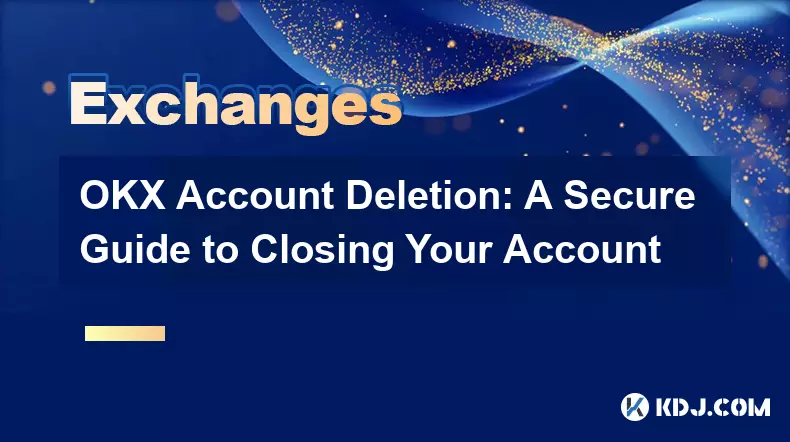-
 bitcoin
bitcoin $101752.865364 USD
-1.09% -
 ethereum
ethereum $3382.985899 USD
-1.38% -
 tether
tether $0.999658 USD
0.04% -
 xrp
xrp $2.272505 USD
-1.51% -
 bnb
bnb $989.089004 USD
0.14% -
 solana
solana $156.962612 USD
-3.08% -
 usd-coin
usd-coin $0.999776 USD
0.01% -
 tron
tron $0.290786 USD
-0.69% -
 dogecoin
dogecoin $0.174594 USD
-2.86% -
 cardano
cardano $0.560085 USD
-3.55% -
 hyperliquid
hyperliquid $40.023704 USD
-5.75% -
 chainlink
chainlink $15.324649 USD
-2.78% -
 bitcoin-cash
bitcoin-cash $493.576540 USD
-3.52% -
 zcash
zcash $571.320038 USD
-12.05% -
 stellar
stellar $0.280066 USD
-4.26%
A Pro's Guide to Managing Multiple Cryptocurrencies on Coinbase Securely.
Enable 2FA with an authenticator app, use unique passwords, monitor active sessions, set up alerts, and never share recovery codes to secure your Coinbase account. (154 characters)
Nov 04, 2025 at 07:45 pm

Setting Up Strong Account Protections
1. Enable two-factor authentication (2FA) using an authenticator app like Google Authenticator or Authy instead of SMS, as SIM-swapping attacks can compromise phone-based verification.
- Use a unique, complex password that is not reused across any other platforms; consider utilizing a reputable password manager to store and generate secure credentials.
- Regularly review active sessions and sign out of any unrecognized devices through the security settings page on Coinbase.
- Set up email and mobile alerts for all account activities including logins, withdrawals, and changes to security settings to detect suspicious behavior immediately.
- Never share recovery phrases, passwords, or 2FA codes with anyone—even support staff claiming to represent Coinbase.
Organizing Your Crypto Portfolio Efficiently
1. Label your wallets and addresses clearly within Coinbase to distinguish between different assets and their intended purposes—such as long-term holding, trading, or staking.
- Utilize Coinbase’s portfolio tracking tools to monitor balances, price movements, and allocation percentages across multiple cryptocurrencies.
- Group related assets into folders or categories if supported by third-party portfolio managers that integrate with Coinbase APIs.
- Keep a private, encrypted record of purchase dates, prices, and transaction IDs to simplify tax reporting and performance analysis.
- Avoid keeping large amounts of less frequently used tokens on exchanges; transfer them to non-custodial wallets for better control and reduced exposure.
Safeguarding Against Unauthorized Transactions
1. Approve withdrawal addresses manually through email and 2FA confirmation each time a new destination is added.
- Limit the number of whitelisted withdrawal addresses and remove any outdated ones regularly.
- Implement withdrawal delays where available, giving you a window to cancel transactions in case of unauthorized access.
- Monitor transaction history weekly for any unexpected sends, swaps, or authorizations even if no alerts were triggered.
- Always double-check wallet addresses character-by-character when initiating transfers, especially under time-sensitive conditions.
Using Advanced Features Without Compromising Security
1. Exercise caution when connecting third-party applications via API keys; only grant necessary permissions such as read-only access when possible.
- Rotate API keys periodically and revoke access for services no longer in use to minimize attack surface.
- Avoid storing API keys in plaintext files or shared documents—use environment variables or encrypted storage solutions.
- Disable trading or withdrawal capabilities on API keys used solely for analytics or portfolio tracking.
- Stay updated on Coinbase’s latest feature rollouts and security advisories to understand how new tools affect your holdings.
Frequently Asked Questions
What should I do if I lose my 2FA device?Immediately contact Coinbase support and verify your identity using backup recovery methods. You may be required to go through additional authentication steps before regaining access. Keep your recovery codes stored securely offline to expedite this process.
Can I have separate 2FA setups for different family members using the same Coinbase account?No. Each Coinbase account supports one primary 2FA method. Family members should create individual accounts and link them through legal trusts or joint ownership structures if needed for estate planning.
How does Coinbase handle suspicious login attempts?Coinbase employs real-time monitoring systems that flag logins from unfamiliar locations or devices. These triggers prompt additional verification steps such as email confirmations or blocking access until identity is re-verified.
Is it safe to keep stablecoins on Coinbase long-term?While Coinbase is generally secure, prolonged storage of any digital asset on an exchange carries counterparty risk. For significant holdings, transferring stablecoins to a self-custody wallet with audit-proof reserves adds an extra layer of protection.
Disclaimer:info@kdj.com
The information provided is not trading advice. kdj.com does not assume any responsibility for any investments made based on the information provided in this article. Cryptocurrencies are highly volatile and it is highly recommended that you invest with caution after thorough research!
If you believe that the content used on this website infringes your copyright, please contact us immediately (info@kdj.com) and we will delete it promptly.
- Ripple (XRP) in 2026: Hold or Fold? A Look at XRP's Future and Emerging DeFi Alternatives
- 2025-11-08 18:35:01
- Zcash ZEC Coin Price Explosion: From Privacy Niche to Center Stage
- 2025-11-08 18:55:01
- Berachain Price Prediction: Navigating the Honeycomb Hype in Crypto
- 2025-11-08 18:55:01
- Arthur Hayes, Gold, and Bitcoin: A Modern Monetary Trinity?
- 2025-11-08 19:15:01
- Shiba Inu's Next Move: Navigating a Shifting Market
- 2025-11-08 19:20:01
- Pakistan's Crypto Crossroads: Balancing Opportunity with Asset-Backed Realities
- 2025-11-08 19:20:01
Related knowledge

Common Mistakes to Avoid on OKX: A Guide for New Traders
Nov 04,2025 at 03:37pm
Understanding the Interface Before Trading1. New traders often jump into placing orders without fully exploring the OKX platform layout. Taking time t...

OKX TradingView Integration: A Guide to Advanced Chart Analysis
Nov 02,2025 at 03:37am
OKX and TradingView: Bridging the Gap for Professional Traders1. OKX, one of the leading cryptocurrency exchanges, has integrated with TradingView to ...

Finding Your OKX Deposit Address: A Quick and Safe Guide
Nov 05,2025 at 01:15pm
Finding Your OKX Deposit Address: A Step-by-Step Process1. Log into your OKX account using your registered credentials. Ensure you are accessing the o...

OKX Savings Guide: A Low-Risk Strategy for Earning Crypto
Nov 05,2025 at 06:55am
Understanding OKX Savings and Its Role in Crypto Earnings1. OKX Savings offers users a straightforward method to earn passive income by leveraging idl...

OKX Account Deletion: A Secure Guide to Closing Your Account
Nov 05,2025 at 08:44am
Understanding the Implications of Account Closure1. Closing your OKX account permanently removes access to all associated trading features, including ...

Mastering the OKX Mobile App: Tips for Trading on the Go
Nov 05,2025 at 01:19am
Streamlined Navigation for Efficient Trading1. The OKX mobile app features a clean and intuitive interface that allows traders to access key functions...

Common Mistakes to Avoid on OKX: A Guide for New Traders
Nov 04,2025 at 03:37pm
Understanding the Interface Before Trading1. New traders often jump into placing orders without fully exploring the OKX platform layout. Taking time t...

OKX TradingView Integration: A Guide to Advanced Chart Analysis
Nov 02,2025 at 03:37am
OKX and TradingView: Bridging the Gap for Professional Traders1. OKX, one of the leading cryptocurrency exchanges, has integrated with TradingView to ...

Finding Your OKX Deposit Address: A Quick and Safe Guide
Nov 05,2025 at 01:15pm
Finding Your OKX Deposit Address: A Step-by-Step Process1. Log into your OKX account using your registered credentials. Ensure you are accessing the o...

OKX Savings Guide: A Low-Risk Strategy for Earning Crypto
Nov 05,2025 at 06:55am
Understanding OKX Savings and Its Role in Crypto Earnings1. OKX Savings offers users a straightforward method to earn passive income by leveraging idl...

OKX Account Deletion: A Secure Guide to Closing Your Account
Nov 05,2025 at 08:44am
Understanding the Implications of Account Closure1. Closing your OKX account permanently removes access to all associated trading features, including ...

Mastering the OKX Mobile App: Tips for Trading on the Go
Nov 05,2025 at 01:19am
Streamlined Navigation for Efficient Trading1. The OKX mobile app features a clean and intuitive interface that allows traders to access key functions...
See all articles





















![The Graph Price Prediction [GRT Crypto Price News Today] The Graph Price Prediction [GRT Crypto Price News Today]](/uploads/2025/11/07/cryptocurrencies-news/videos/690d4df44fe69_image_500_375.webp)




















































